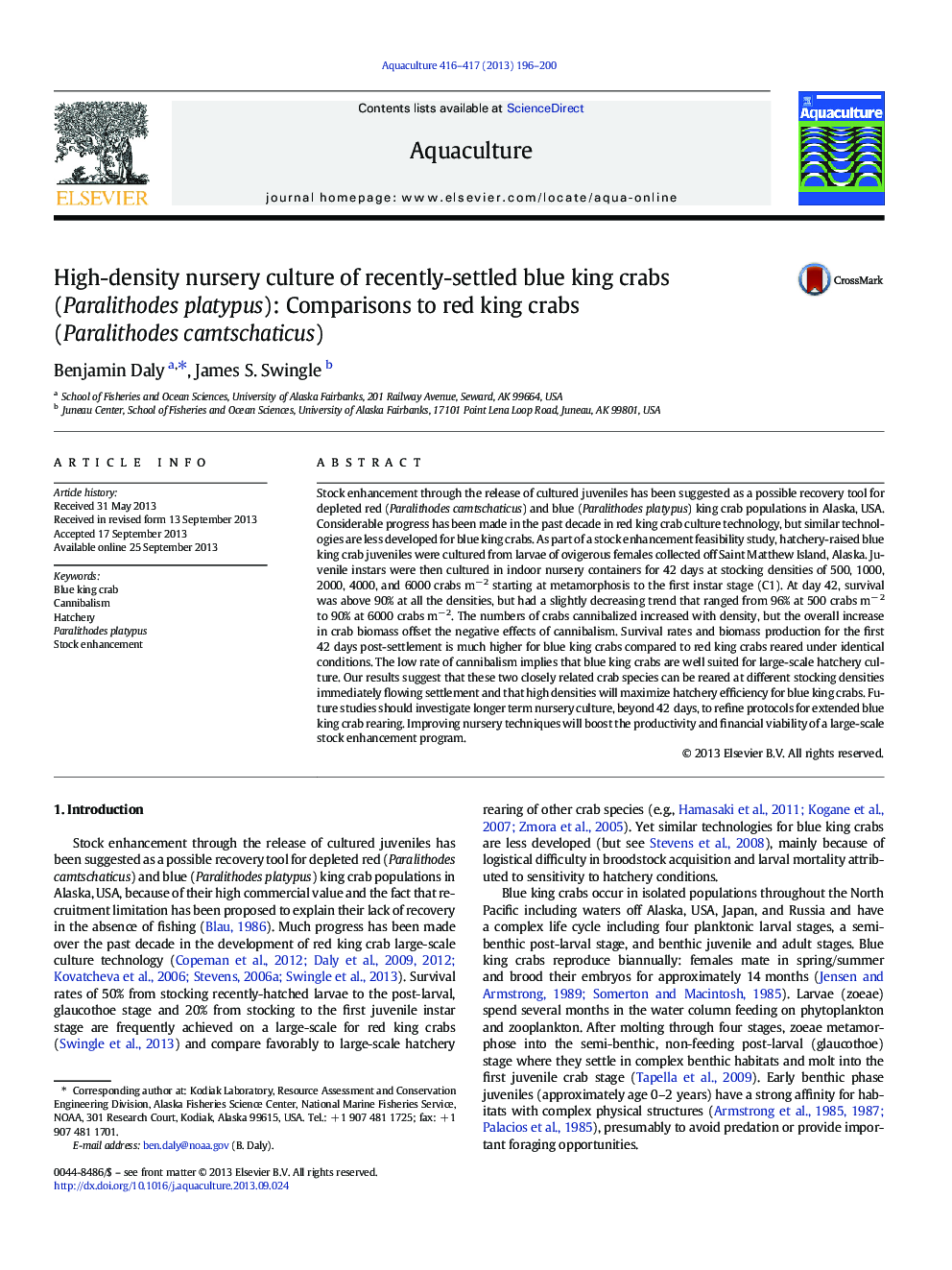| کد مقاله | کد نشریه | سال انتشار | مقاله انگلیسی | نسخه تمام متن |
|---|---|---|---|---|
| 2422056 | 1552865 | 2013 | 5 صفحه PDF | دانلود رایگان |

• We compare red and blue king crab hatchery production.
• Blue king crab survival and biomass yield compares favorably to those of red king crabs.
• Blue king crab juveniles can be reared at elevated densities.
• Both cold water species are tolerant of relatively warm rearing temperatures.
• Both species are suitable for intensive hatchery-culture, but at varying densities.
Stock enhancement through the release of cultured juveniles has been suggested as a possible recovery tool for depleted red (Paralithodes camtschaticus) and blue (Paralithodes platypus) king crab populations in Alaska, USA. Considerable progress has been made in the past decade in red king crab culture technology, but similar technologies are less developed for blue king crabs. As part of a stock enhancement feasibility study, hatchery-raised blue king crab juveniles were cultured from larvae of ovigerous females collected off Saint Matthew Island, Alaska. Juvenile instars were then cultured in indoor nursery containers for 42 days at stocking densities of 500, 1000, 2000, 4000, and 6000 crabs m− 2 starting at metamorphosis to the first instar stage (C1). At day 42, survival was above 90% at all the densities, but had a slightly decreasing trend that ranged from 96% at 500 crabs m− 2 to 90% at 6000 crabs m− 2. The numbers of crabs cannibalized increased with density, but the overall increase in crab biomass offset the negative effects of cannibalism. Survival rates and biomass production for the first 42 days post-settlement is much higher for blue king crabs compared to red king crabs reared under identical conditions. The low rate of cannibalism implies that blue king crabs are well suited for large-scale hatchery culture. Our results suggest that these two closely related crab species can be reared at different stocking densities immediately flowing settlement and that high densities will maximize hatchery efficiency for blue king crabs. Future studies should investigate longer term nursery culture, beyond 42 days, to refine protocols for extended blue king crab rearing. Improving nursery techniques will boost the productivity and financial viability of a large-scale stock enhancement program.
Journal: Aquaculture - Volumes 416–417, 5 December 2013, Pages 196–200